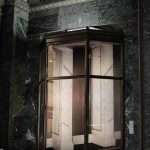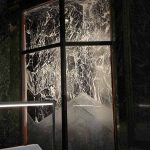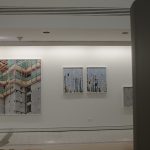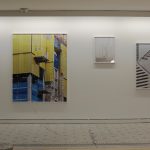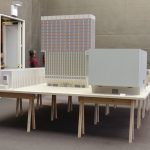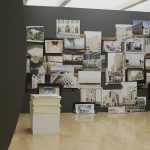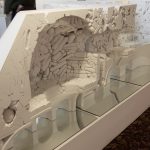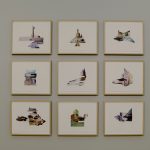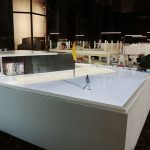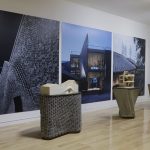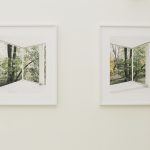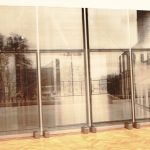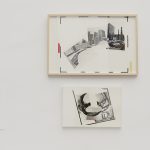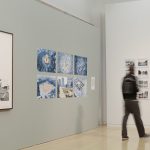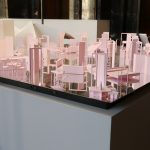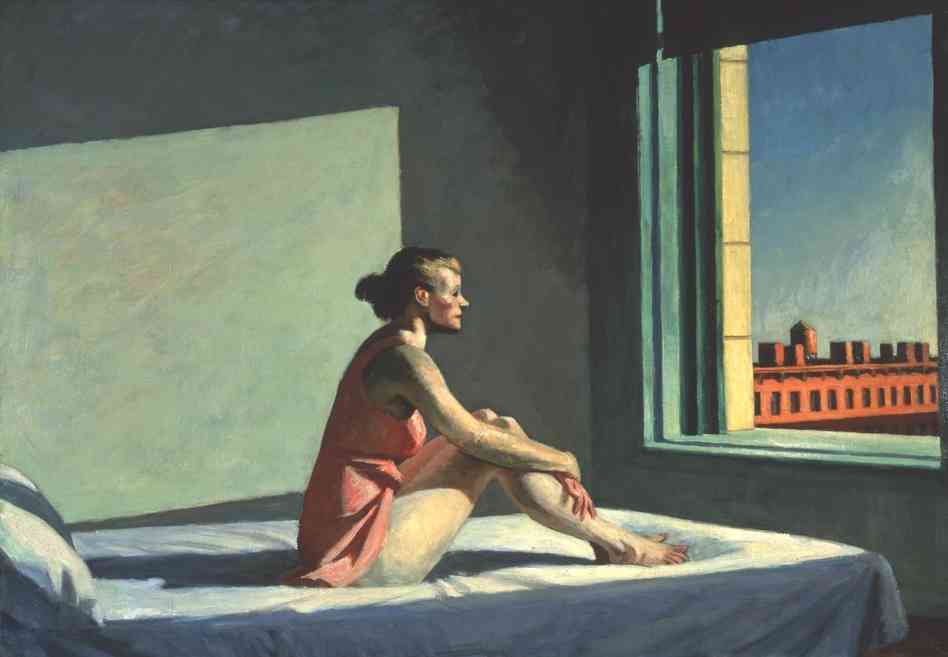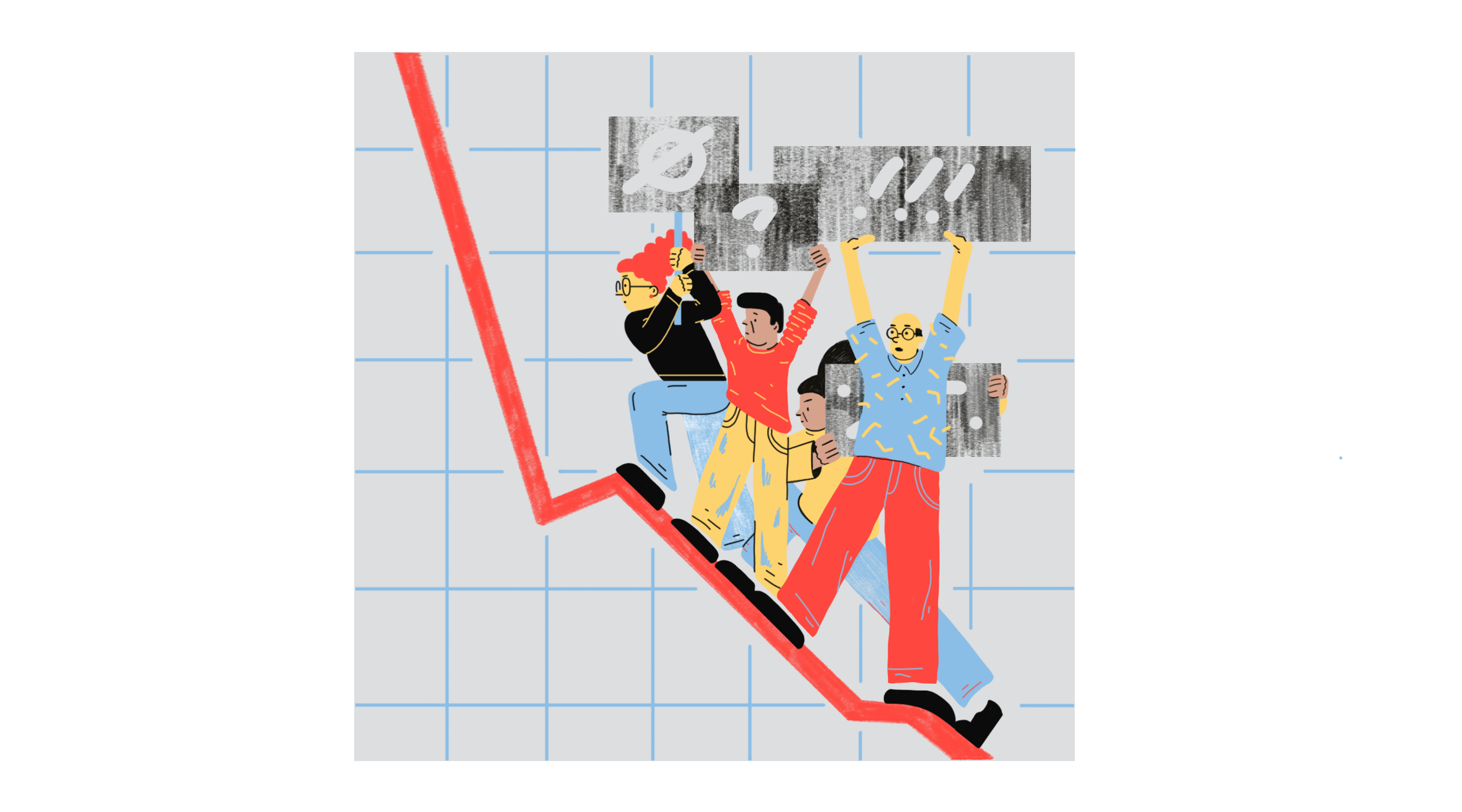“I hope you will understand that architecture has nothing to do with the invention of forms, it is not a playground for children, young or old. Architecture wrote the history of the epochs and gave them their names.” — Ludwig Mies van der Rohe.
“Make New History,” the second edition of the Chicago Architecture Biennial, was unveiled at the Chicago Cultural Center on September 16, 2017. The curators, Los Angeles architects Sharon Johnson and Mark Lee, selected over 141 architects and artists from twenty different countries. The driving question of the Biennial is how can the latest architecture create new history in places across the world?
Unlike its earlier edition, this year’s Chicago Architecture Biennial launched with Expo Chicago. Expanding from the hub of the Chicago Cultural Center, the Biennial is exhibited in six museums and art centers around the city — Beverly Art Center, DePaul Art Museum, DuSable Museum of African American History, Hyde Park Art Center, The National Museum of Mexican, and The National Museum of Puerto Rican Arts and Culture — in order to highlight the cultural identity of different neighborhoods in Chicago. The Biennial is open to the public through January 7, 2018.
This year’s biennial employs a photographic lens to reflect upon architectural practice. By adopting historical references in their contemporary practices, the participants imagine a new history of architecture. Through different media such as photo collages, 3D prints, photographic light projections, and photo installations, the architects and artists translate the three-dimensional space of architecture onto a two-dimensional surface. This shift toward a two-dimensional abstract surface allows the freedom to approach space anew.
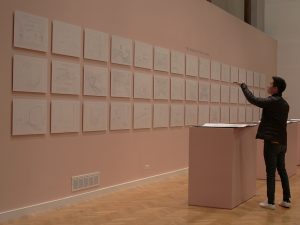
On the third Floor of the Cultural Center, there are 45 computer rendered drawings on a bright pink wall. Each rendering reveals an interior room drawn with gray lines on a white background. Adopting English writer Virginia Woolf’s essay, “A Room of One’s Own,” Belgian architects Dogma depict the domestic space of artists, writers, innovators, and architects, such as Virginia Woolf, Frida Kahlo, and Martin Luther King. An empty room with a yoga mat reveals the identity of the inhabitant, Steve Jobs. Although three large books on pedestals trace the history of the room as the origin of architecture itself, it is more captivating to observe the delicate details and intimate moments captured in the drawings themselves.

Veronika Kellndorfer printed large scale photographs of Mies van der Rohe’s New National Gallery in Berlin on sheets of glass. The scale creates an architectural presence in the space of the gallery. The artist examines the raw materiality of Mies van der Rohe’s architecture of glass and steel. The contrast between the opaque image of the architecture and the transparent negative space of the glass casts shadows on the wall. Although the work itself is two-dimensional, the interplay of reflection and surface creates layered dimensions.
There are illusionistic photographs of the Chicago Cultural Center in the Horizontal city section on the second floor. It is hard to perceive the building because of this maneuver. Swiss artist Marianne Muller photographed interior spaces of the Chicago Cultural Center. She installed large scale prints of portions of the building interiors in the vitrines at G.A.R. Hall, the photographs trick the eye and question how two-dimensional photography penetrate into three-dimensional space.

Karamuk *Kuo Architects constructed a scaled model of the Adolf Loos’s American Bar in Vienna as a site of cultural exchange. The American Bar in Vienna stands as a symbol of a new wave of modernity. Intellectual figures including artist Egon Schiele, psychoanalyst Sigmund Freud, and musician Arnold Schoenberg, shared their ideas there. The scale of the model and historical references create an intimate atmosphere. The experience is very different inside, expanding the vision and view of tricks by using mirrors, and allows the viewer to see infinite space through the model.
On the first floor of the hallway, Daniel Everett’s digital collage of images of construction occurring in Chicago reveals how the urban cityscape transforms. He captured mundane contemporary moments of construction of buildings in the city. However, there is a sense of ambiguity in the collage. Large scale post-production photographs implement different nuances and tension. The location and scale of the photographs imply walking around the city of Chicago.
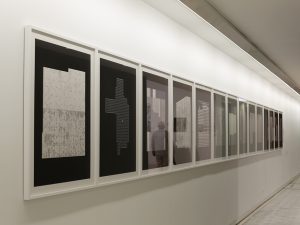
There are several Chicago Series on the first-floor hallway. Because of the matte paper texture and abstract geometric forms, the photographs look like paintings or pieces of print media. Artist Philipp Schaerer generates digital images adopting the idea of sampling and cropping existing satellite photographs. He explores the language of architectural drawing and documentary photography, allowing him to juxtapose the two media and create abstract visual forms.
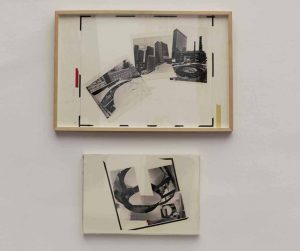
On the second floor of the exhibition space, it may be hard to find Gordon Matta-Clark’s collage work on the wall because of its relatively small scale. The juxtaposition of the photographs with the drawings became a whimsical playground for operating the three- dimensional space. It became an imaginative space, and the artwork suggests the historical space and traces of the architectural collage.




